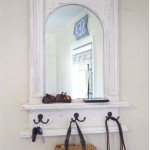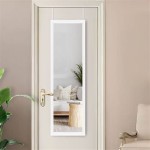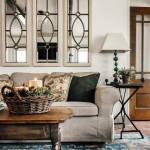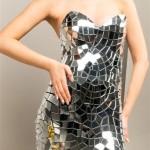Mirror Over Dresser: A Comprehensive Guide
The placement of a mirror over a dresser is a classic design choice found in countless homes. This arrangement offers both practical functionality and aesthetic appeal, contributing significantly to the overall ambiance and perceived space within a room. The integration of a mirror with a dresser is not simply about hanging a reflective surface; it involves a careful consideration of dimensions, style, placement, and intended purpose. This article delves into the various aspects of selecting, positioning, and maximizing the potential of a mirror over a dresser.
The historical prevalence of this design stems from its inherent advantages. Before the advent of built-in closets and complex storage systems, dressers served as primary repositories for clothing and personal items. The addition of a mirror created a convenient vanity area, allowing individuals to easily check their appearance while preparing for the day. The mirror, thus, became an integral extension of the dresser's function, enhancing its utility and transforming it into a complete grooming station.
Beyond its practical origins, the mirror-over-dresser configuration holds significant decorative value. A well-chosen mirror can complement the style of the dresser, reflect natural light to brighten the room, and create an illusion of greater space. The combination can also serve as a focal point, drawing the eye and adding visual interest to an otherwise plain wall. To fully realize these benefits, careful planning and execution are essential.
Key Considerations When Choosing a Mirror
Selecting the right mirror is crucial for achieving the desired aesthetic and functionality. Several factors must be taken into account, including the mirror's size, shape, frame, and overall style. The chosen mirror should harmonize with the dresser and the broader decor of the room.
Size is a primary consideration. A mirror that is too small will appear insignificant and fail to provide adequate reflection. Conversely, a mirror that is excessively large can overwhelm the dresser and create an unbalanced look. As a general guideline, the mirror's width should be approximately two-thirds to three-quarters of the dresser's width. This proportion creates a visually pleasing balance. The height of the mirror should also be proportional to the room's ceiling height and the overall scale of the dresser.
The shape of the mirror can drastically alter the perceived style of the room. Rectangular mirrors offer a classic and versatile option, suitable for a wide range of dresser styles. Round or oval mirrors introduce a softer, more organic feel, often complementing curved or ornate dressers. Arched mirrors add a touch of elegance and sophistication, while square mirrors provide a modern and minimalist aesthetic. The choice of shape should align with the desired design theme and the existing architectural elements of the room.
The frame of the mirror contributes significantly to its overall style. A heavily ornate frame can add a touch of grandeur and formality, while a simple, unadorned frame offers a more contemporary and understated look. The material and finish of the frame should complement the dresser's hardware and the room's color palette. Common frame materials include wood, metal, and composite materials, each offering distinct aesthetic characteristics. Wood frames can be stained or painted to match the dresser, while metal frames provide a sleek and modern contrast. Frameless mirrors offer a minimalist option, allowing the reflective surface to take center stage.
Style consistency is paramount. A modern dresser paired with a vintage-style mirror may create a jarring and disjointed effect. It is crucial to select a mirror that complements the dresser's design aesthetic. For example, a sleek, minimalist dresser pairs well with a frameless or minimalist rectangular mirror, while an antique dresser benefits from an ornate, gilded frame. Consider the dresser's material, shape, and hardware when selecting a mirror to ensure a cohesive and harmonious look.
Optimal Placement and Mounting Techniques
The placement and mounting of the mirror are just as important as its selection. Improper placement can detract from the room's aesthetic and compromise the mirror's functionality. Proper mounting ensures safety and stability, preventing accidental falls and damage.
The ideal height for a mirror over a dresser is determined by the average user's eye level. The center of the mirror should be approximately at eye level, allowing for comfortable viewing. This height may need to be adjusted based on the specific dimensions of the dresser and the height of the occupants. Before permanently mounting the mirror, it is advisable to temporarily position it at different heights to determine the most comfortable and visually appealing placement.
The distance between the mirror and the dresser should be minimal, typically a few inches. This proximity creates a cohesive visual unit and prevents an awkward gap between the two pieces. However, sufficient space should be left to allow for easy access to the dresser drawers or compartments. Avoid placing the mirror too close to the dresser's surface, which could lead to accidental scratches or damage.
Mounting techniques vary depending on the size and weight of the mirror, as well as the type of wall construction. Lightweight mirrors can often be hung using heavy-duty picture hooks or adhesive strips. However, heavier mirrors require more secure mounting methods, such as screws and anchors. It is crucial to use appropriate anchors for the type of wall material, whether it is drywall, plaster, or wood. For particularly heavy or large mirrors, it may be advisable to consult a professional installer to ensure safe and secure mounting. Always use a level to ensure that the mirror is hung straight and even.
Consider the surrounding lighting when positioning the mirror. Avoid placing the mirror in direct sunlight, as this can create glare and potentially damage the mirror's reflective surface. Instead, position the mirror to reflect natural light from a nearby window, which can brighten the room and create a more inviting atmosphere. Artificial lighting, such as sconces or lamps, can also be strategically placed to enhance the mirror's functionality and create a more flattering reflection.
Maximizing Functionality and Aesthetics
Beyond basic placement, various strategies can be employed to maximize the functionality and aesthetic impact of a mirror over a dresser. These strategies involve incorporating additional elements, such as lighting, accessories, and decorative accents, to create a more personalized and visually appealing space.
Adding lighting around the mirror can significantly enhance its functionality and create a more flattering reflection. Sconces mounted on either side of the mirror provide even illumination, minimizing shadows and creating a more balanced look. Alternatively, a strip of LED lights can be placed along the top or sides of the mirror to provide a subtle and diffused glow. The type of lighting should be chosen to complement the room's overall style and create the desired ambiance. Warm lighting is generally more flattering for skin tones, while cool lighting provides a brighter and more energizing effect.
Incorporating accessories and decorative accents around the mirror can personalize the space and add visual interest. Small decorative objects, such as vases, candles, or picture frames, can be placed on the dresser's surface to complement the mirror's style and create a cohesive look. Avoid cluttering the dresser with too many items, as this can detract from the mirror's impact and create a sense of disorganization. Instead, select a few carefully chosen accessories that reflect personal style and enhance the room's aesthetic.
The color scheme of the room plays a crucial role in maximizing the aesthetic impact of the mirror and dresser. Choose colors that complement each other and create a harmonious balance. Light and neutral colors can enhance the mirror's ability to reflect light and create a sense of spaciousness. Darker colors can create a more dramatic and intimate atmosphere. The color of the wall behind the mirror should also be considered, as it will be reflected in the mirror and affect the overall look of the room.
Consider the mirror's reflective properties and how they can be used to enhance the room's features. Strategically positioning the mirror to reflect a particular view or architectural element can create a sense of depth and visual interest. For example, a mirror placed opposite a window can bring the outdoors in and create a more airy and open feel. A mirror placed near a doorway can create the illusion of a larger entry space. By carefully considering the mirror's reflective properties, it is possible to transform the room's perceived dimensions and create a more visually appealing environment.
In conclusion, the successful integration of a mirror over a dresser involves a comprehensive understanding of various factors, including size, shape, style, placement, mounting techniques, and decorative accents. By carefully considering these aspects, it is possible to create a functional and aesthetically pleasing space that enhances the room's overall ambiance and reflects personal style.

15 Best Round Mirrors Thetarnishedjewelblog Home Bedroom Design

Mirror Above Dresser Design Ideas

Mirror Above Dresser Design Ideas

How High To Hang Mirror Over Dresser Ideal Height

Mirror Above Dresser Design Ideas

Mirror Above Dresser Design Ideas

28 Spectacular Bedroom Mirror Ideas To Complete Your Room

Favorite Wall Mirrors Of Every Shape Room For Tuesday

Pin On Bedrooms

Style Your Dresser Like A Designer Showit Blog








